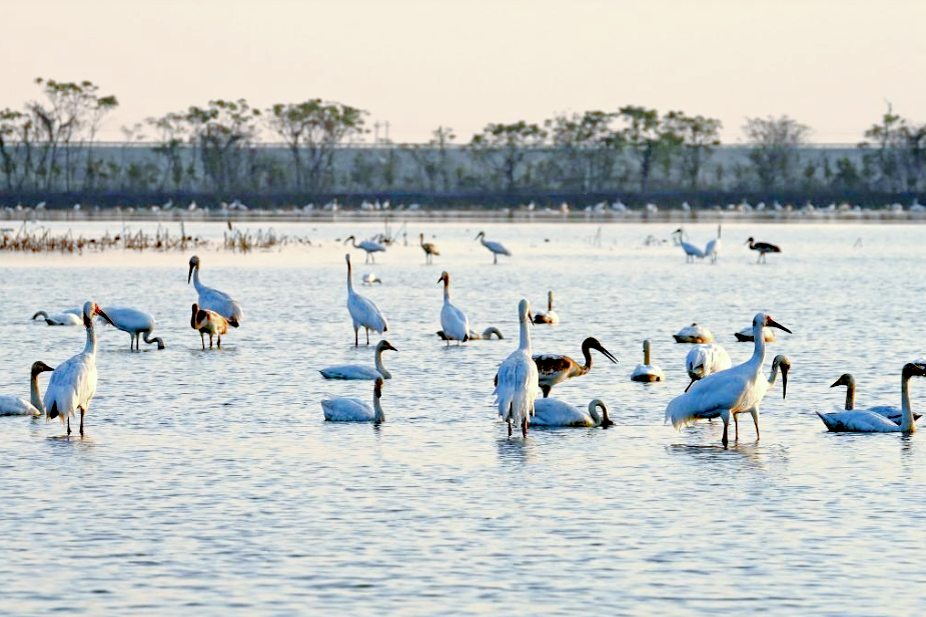Is it true that the Chinese have learned to use artificial intelligence to protect nature? (4 photos)
Many people believe that artificial intelligence is needed to solve only the most complex problems. Such as working with big data or in a high-tech implementation system. However, recently it has begun to be actively used in everyday life. The Chinese were among the first to use artificial intelligence to perform simple tasks to control Poyang Lake. 
This lake is one of 1,140 places in the People's Republic of China where migratory birds fly from the northern territories to nest in winter. During the most active period, up to 800 thousand birds can be located in the vicinity of the reservoir. Some of them are quite rare species and require constant monitoring and protection. It is very difficult for several natural inspectors on the staff of this natural park to cope with such a task. Therefore, to perform tasks during the peak nesting period, it was decided to use the capabilities of artificial intelligence. 
Migratory birds on the Poyang pond in China. Photo: news.myseldon.com
For this, a so-called “intelligent control platform” was used, which currently helps control hundreds of thousands of birds that fly to Poyang Lake every year.
“Using AI technology, we can instantly identify bird breeds and accurately determine the density and size of bird flocks,” said Sun Yue, an official with the administration of the environmental protection zone of the Poyang National Nature Reserve, located in China's Jiangxi province.
The introduction of an artificial intelligence system for observation allows us to carry out not only counting of arriving birds and determining what species they belong to. This is complete control over the surrounding area, first of all - determining the amount of food needed for the birds. As well as “building material” for creating places for successful breeding. 
This is what the latest technology looks like on the monitor.
At the same time, it is determined how many employees of the natural park are needed in a given period to service the territory. Sensors are installed on the clothes of each of the inspectors, making it possible to establish his location and, if necessary, correctly distribute them throughout the territory adjacent to Lake Poyang. For this purpose, 30 CCTV cameras have been installed in the reserve.
The environmental protection zone in the form of a nature reserve on Lake Poyang was created in 1983, and in 1988 it was given national status. In 2021, the State Administration of Forestry and Steppe Economy of the People's Republic of China adopted a program for the development of protected areas for 2021-2035, which provides for the development of the implementation of an artificial intelligence system.
Poyang Lake, formerly called Pengli, is considered the largest freshwater lake in China. It is located in the southern part of the Yangtze River in Jiangxi Province, and consists of a northern and southern part, separated by a narrow neck. There are 25 islands on the territory of the lake, its length is 170 kilometers, width - 19 km, depth - only from 2 to 16 meters. The lake is considered one of the largest nesting sites for cranes. There are several varieties of them here - sandhill and Japanese cranes, black and gray cranes. 
“There is no destiny except the one we choose for ourselves.”
The expanses of the lake are also good for fishing - here you can catch not only a dozen varieties of fish, but also various shellfish, crabs and shrimp. So here you can not only watch rare bird species, but also have a good rest in the comfortable conditions of a unique Chinese reservoir.




























